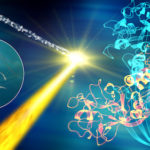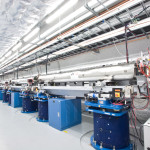MBIB researchers were part of a team that used SLAC’s X-ray free-electron laser (XFEL) – the Linac Coherent Light Source (LCLS), a DOE Office of Science User Facility – to get atomic views of the toxin BinAB, used as a larvicide to control mosquito-borne diseases such as malaria, West Nile virus and viral encephalitis. The structure of this bacterial toxin was solved using de novo phasing: the protein crystals were tagged with heavy metal markers, tens of thousands of diffraction patterns were collected using the XFEL, and the information was combined to obtain a three-dimensional map of the electron density of the protein. The Berkeley team, headed by Senior Scientist Nicholas Sauter, acquired and processed data for the study, published in Nature last week.
Instrumentation Advances Expand the Reach of X-ray Free Electron Lasers
Femtosecond crystallography (FX) is especially suitable for studying radiation sensitive enzymes that require metals for their function, as the extremely short and bright X-ray pulses can produce a diffraction image before any atomic motions can occur in the crystal. This cutting edge method is capable of extending our capacity to study smaller, more fragile crystals and determine the catalytic structures of biologically relevant macromolecules.
Was this page useful?
Send





